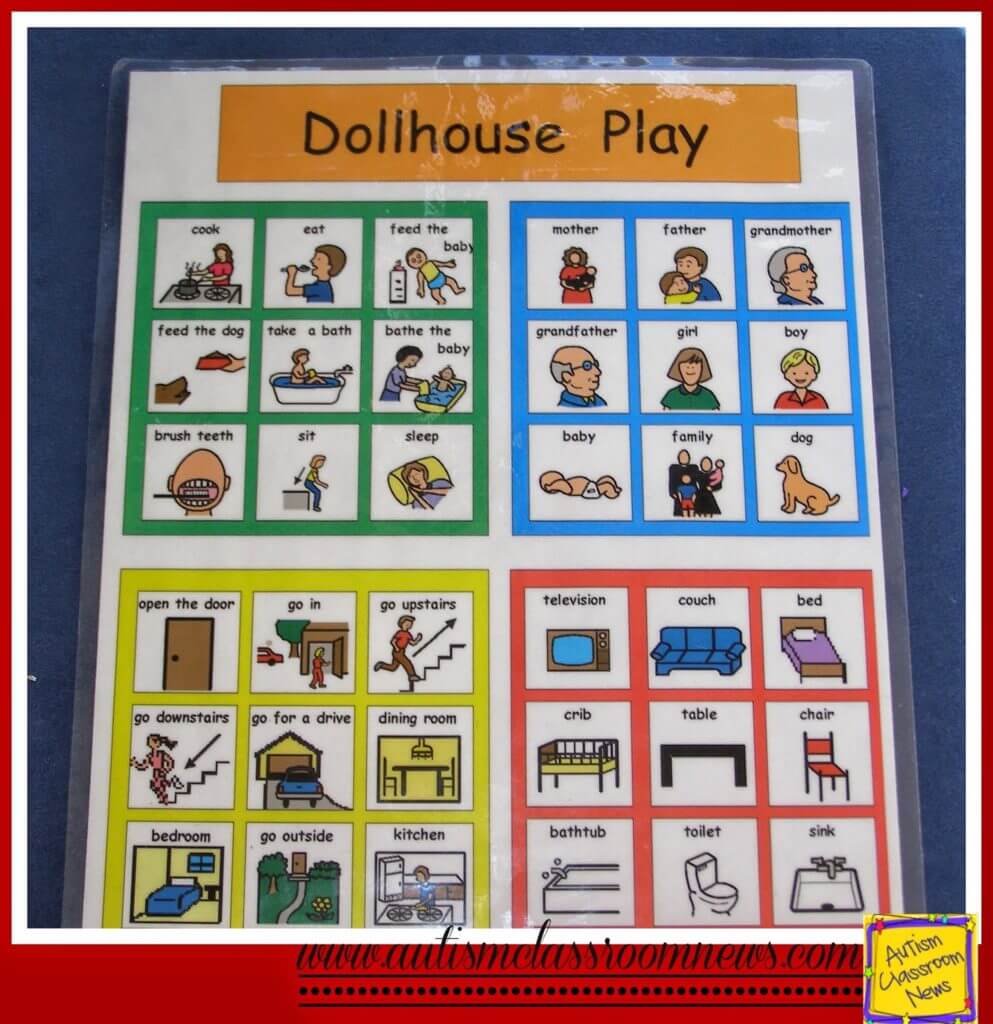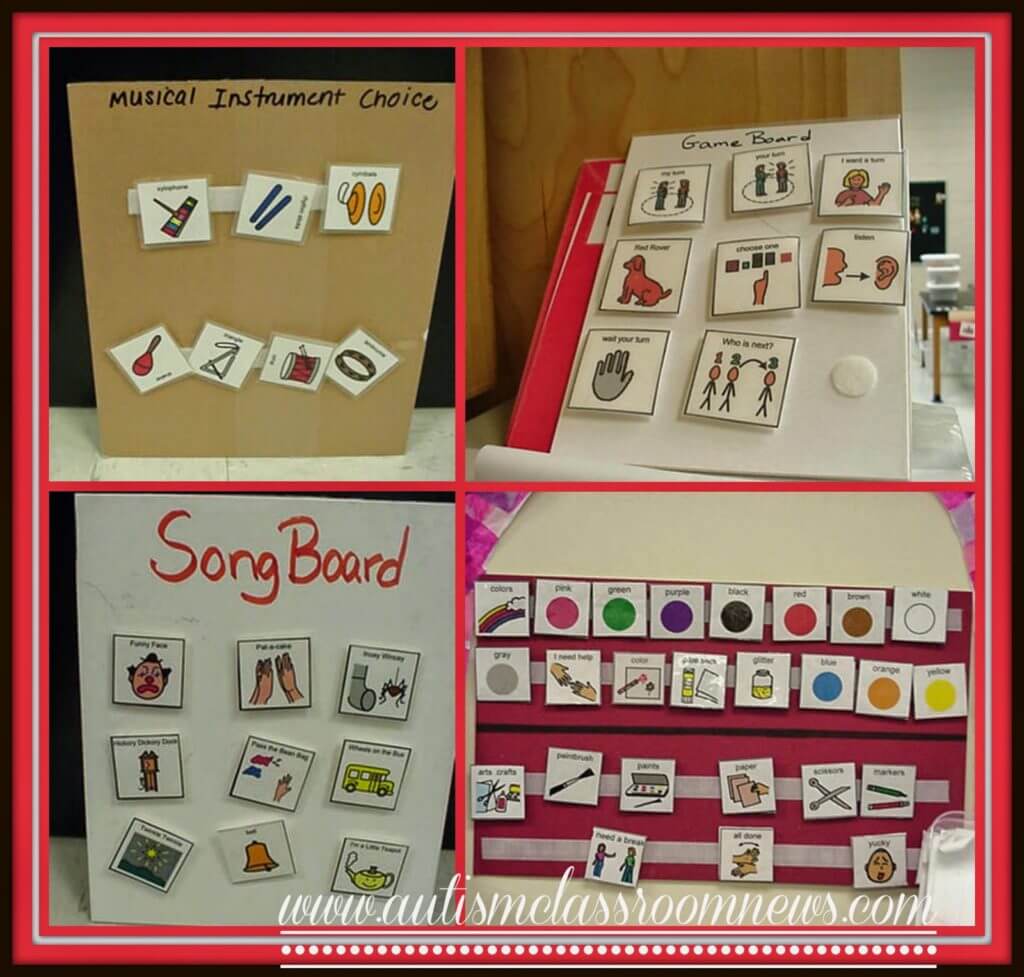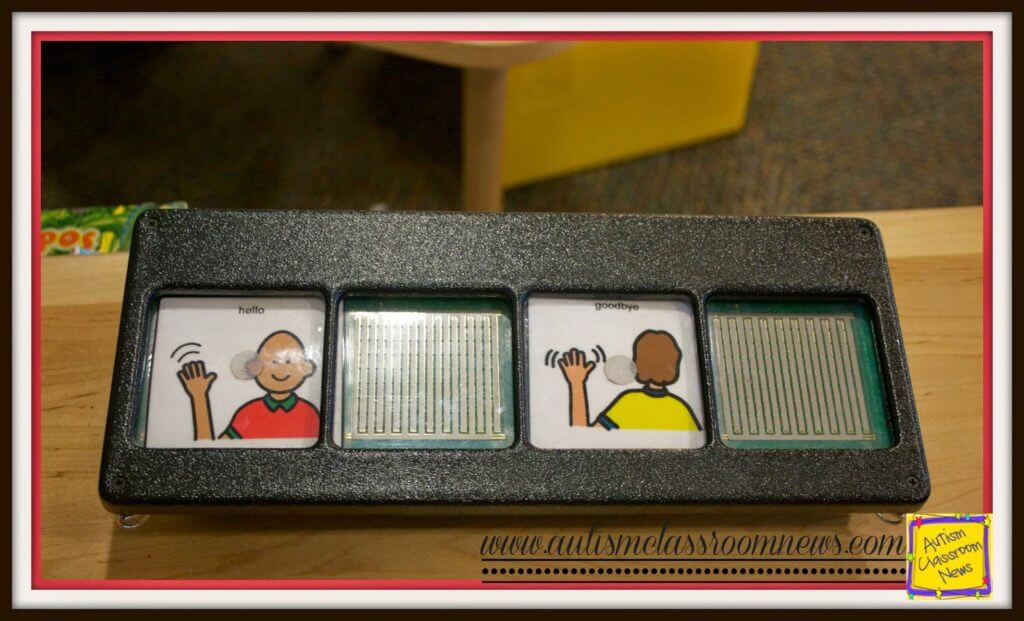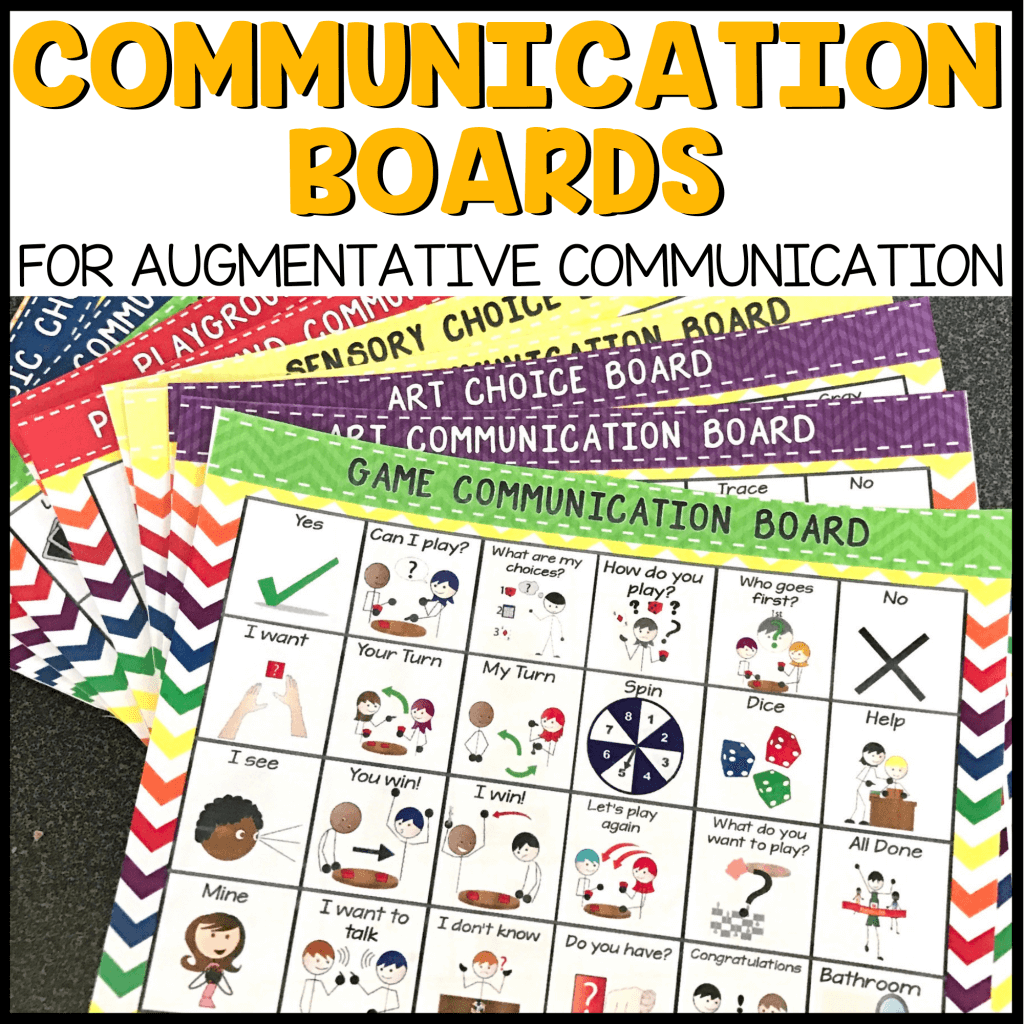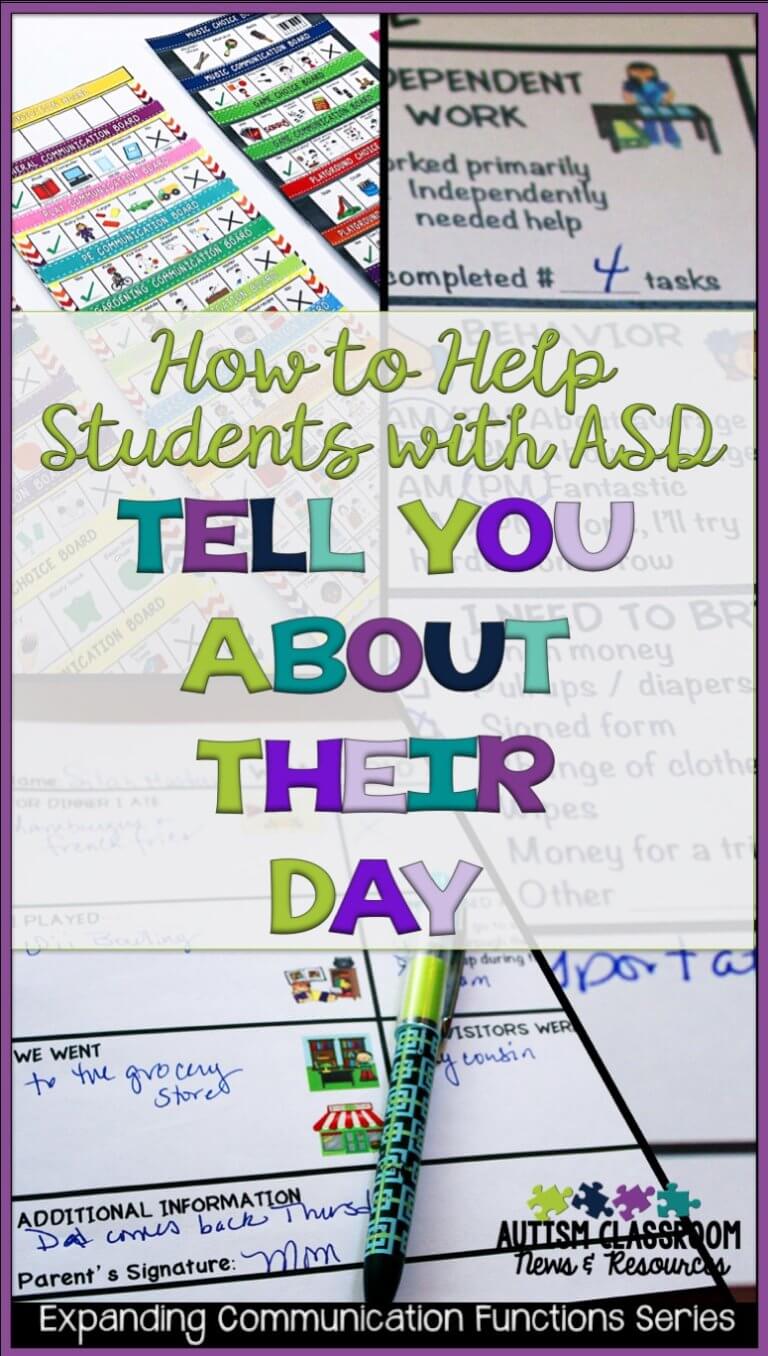Sharing is caring!
One of the most important elements of teaching language and communication is making sure that we create many, many opportunities to practice it throughout the day. Language is something that you have to practice and use in order for it to maintain. Practicing it in many situations and in many different ways increases the likelihood that it will generalize and maintain. I generally like to get at least 5 opportunities to practice at least one communication or language skill in each activity of the day. I use a data sheet (download it free here) to plan out the communication goals across the day and the 5 boxes remind everyone to create those opportunities. This also allows me to see if I need to provide more training on how to create opportunities when the boxes aren’t filled in. In addition to supporting communication of the students, the strategies below also serve as visual cues to the adults to create the opportunities.
As I’ve talked about before, it’s important to make sure that students’ communication systems, if they are not proficient verbally, are available to them throughout the day and not just pulled out by the staff when we need them. However, it’s also important to make sure that students using augmentative communication systems have the vocabulary they need to support specific activities. Here are some ways to engineer the classroom for different types of communication to be used for different activities.
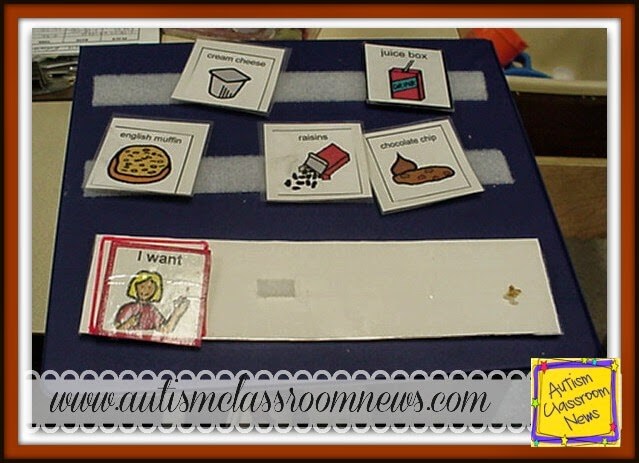 Make sure you have the special vocabulary needed for a student’s communication when you set up the activity. In this picture the class was making a special snack with English muffins, raisins and cream cheese. In order to access the ingredients needed to make his snack, this student had to request the different ingredients. And because teachers are always making things harder, he had to ask multiple times for raisins because we only gave him small amounts each time he asked (he liked raisins).
Make sure you have the special vocabulary needed for a student’s communication when you set up the activity. In this picture the class was making a special snack with English muffins, raisins and cream cheese. In order to access the ingredients needed to make his snack, this student had to request the different ingredients. And because teachers are always making things harder, he had to ask multiple times for raisins because we only gave him small amounts each time he asked (he liked raisins).
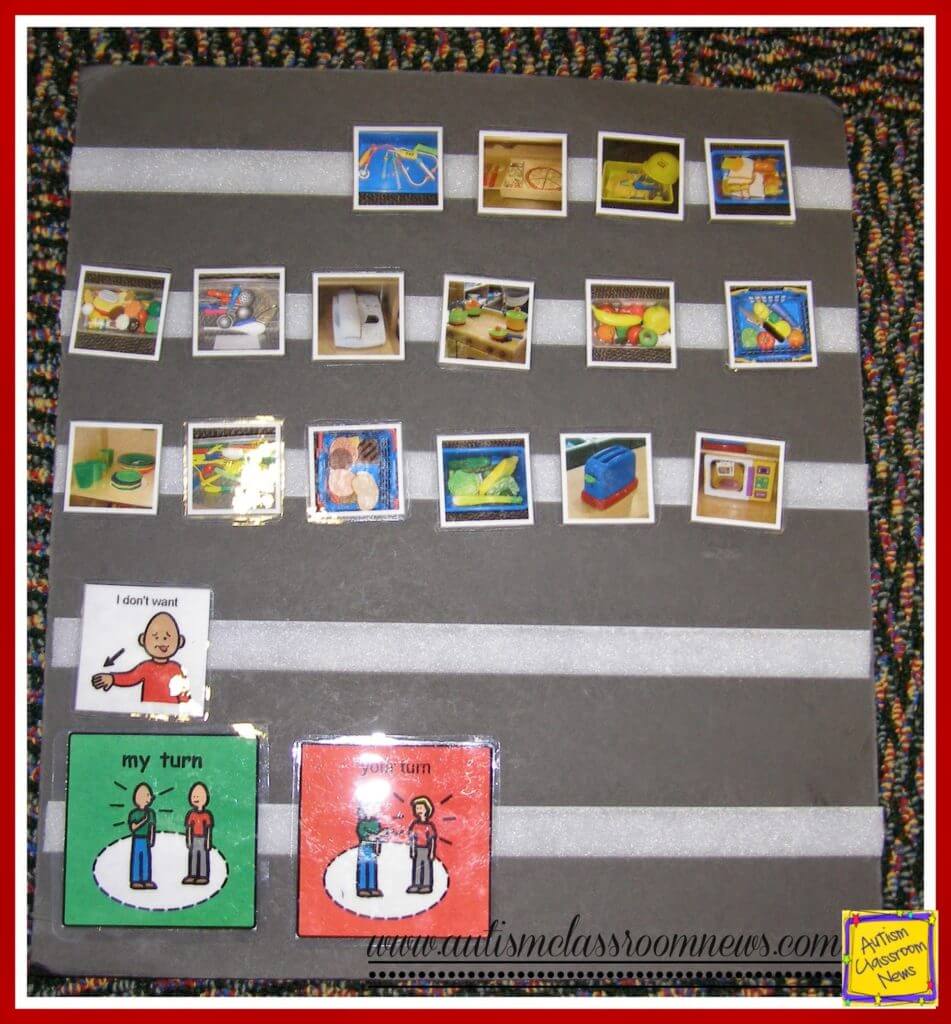 Similarly you can have communication boards set up at different areas of the classroom to supplement students’ individual systems, like this board that includes pictures of the materials in the play kitchen and social support (your turn/my turn) visuals. This assures that the visuals will be handy when they are needed if they are kept right by the kitchen area. Another is set up to support play in the dollhouse area.
Similarly you can have communication boards set up at different areas of the classroom to supplement students’ individual systems, like this board that includes pictures of the materials in the play kitchen and social support (your turn/my turn) visuals. This assures that the visuals will be handy when they are needed if they are kept right by the kitchen area. Another is set up to support play in the dollhouse area.
Set up communication boards for activities and then teach the staff how to create opportunities for students to make requests. Remind them to not give them all the materials for art, to only give a few items at a time for each request at snack, to have students make a choice of musical instruments at music, and set up situations with games where they have to use their communication to ask for a turn. Here are some examples. You can download the art board FREE from my TPT store and the music instrument board for $1 in my store.
Set up communication systems, either speech generating devices, picture exchange materials or visual cues like sentence strips that remind students to say “hello” and “goodbye” as they enter and leave the room. Then stop at the door and wait expectantly for them to greet you before allowing them in or out. Remember to reinforce this with more than just praise if praise isn’t the biggest reinforcer for the student.
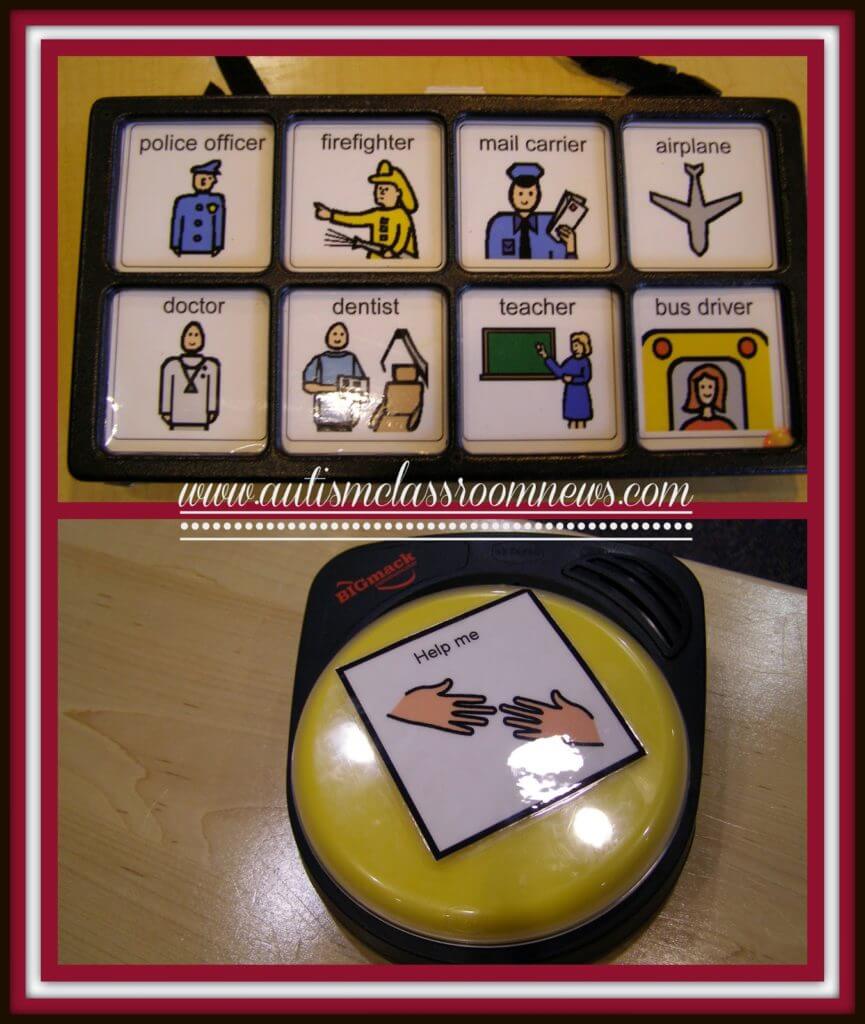 Even if students are using PECS or are verbal, sometimes it’s helpful to have speech generating devices around to give them an extra voice. For instance, for a student who is nonverbal listening to a story read to the class, it might be nice for him or her to be able to identify pictures on the page. The top picture is for a story about community helpers and transportation.
Even if students are using PECS or are verbal, sometimes it’s helpful to have speech generating devices around to give them an extra voice. For instance, for a student who is nonverbal listening to a story read to the class, it might be nice for him or her to be able to identify pictures on the page. The top picture is for a story about community helpers and transportation.
In the bottom picture, a one-message device allows a student, verbal or not, to request help. Sometimes when you are frustrated it’s the hardest time to access your language. Think about a time when you were really angry and for some of us, the words just don’t come to express what we need. Our students sometimes have that difficulty too, so having a switch available that they can use to easily say “I need help” can increase functional communication and decrease problem behavior for some.
So obviously there are lots of ways to engineer classrooms to support language using visual and augmentative communication supports. You can even build opportunities into structured work time by sabotaging the system (only if the student knows how to work independently already) so that he/she has to ask for a pencil to do the worksheet or that he/she has to tell the teacher he/she is finished (cue with the “what’s next” card as talking to the teacher) and get her to check his work before he can get his reinforcer. You can also have students working on receptive language like matching vocabulary pictures or actions or sorting pictures by category or characteristic.



